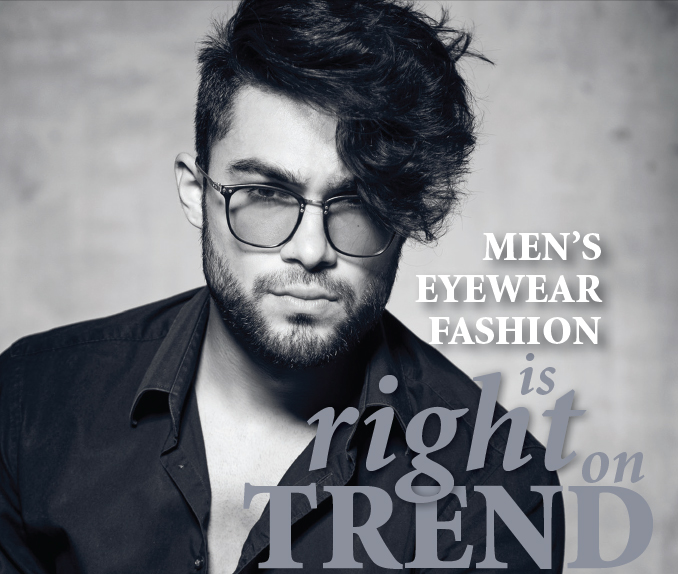 By Paddy Kamen
By Paddy Kamen
Men’s fashion is hot like never before, with three weeks in January set aside for men’s-only fashion weeks in London, Paris, Milan and Florence. Not to be outdone, Toronto, Montreal and Vancouver have their own men’s fashion weeks later in the year. The London show, which starts the season, is only six years old, confirming the trend as a relatively new one.
Nic Screws (correct spelling) is the style director at www.bloomberg.com. She spent January jetting around to the various shows and reporting on the trends she found. Keep in mind that these shows feature designer apparel, not eyewear. However, Screws noted that accessories are very hot for men this year. In one of her key ‘take-aways’ she writes: “Luxurious basics can make a statement just as strongly as weird conceptual items.” And further: “Four-word summary of the entire journey: Buy a big scarf.”1 She also showed pictures of trending footware from the streets of Paris in bold, saturated colours – again supporting her statement about luxury basics.
Eyewear is the ultimate accessory because the face is the first point of contact in interpersonal interactions. When, as Screws points out, “dressing down to dress up,” is the new aesthetic, eyewear can bring a note of distinction, elegance and identity that speaks volumes about the man. Smart eyewear retailers are noticing and taking advantage of this trend.
Amin Mamdani, owner and founder of Squint Eyewear, a high-end optical retailer with stores in Toronto and Oakville, caters to urban professionals with a largely artisanal selection of frames. He says that whereas eyeglasses used to be mainly about fit and function they have become part of a man’s wardrobe. “Men are taking more time selecting eyewear. They look at it as more of an accessory and fashion item than they did in the past and they’re much more open to colour and different shapes.”
This change seems to be an extension of trends for men in grooming and apparel, Mamdani says, “Men are definitely taking greater care of their personal needs in grooming, styling and appearance, and are generally much more particular than ever before. I see it as an urban thing. More products are available for them and they absorb them into their lives and the change becomes part of their thinking.
Val Weide agrees. Weide is an optician and the practice manager for Village Optical, a large optometric office in Winnipeg with a family orientation. “I see many more interesting options for men in apparel these days. I recently saw a men’s apparel ad with the subject wearing a silver metallic suit – not for everyone, certainly! Shirts have colourful accents and different prints. The changes in eyewear are definitely an extension of those trends.”
Weide sees an enticing change in colour options for men’s frames: “We’re not just getting the basic browns and blacks but beautiful dark greens, and matte finishes. There is a fine line between having a frame that is stylish and one that’s outlandish. We find our male patients gravitating to colour accents on the temples or tops of the frames as opposed to a vivid colour for the whole frame. Multilayered acrylics are also very popular.”
Weide’s best-selling collections for men are Evatik from Westgroupe, Rebel and Lightec from Lanctôt, and Ray-Ban.
Mamdani sees olive, sky blue, midnight blue, chocolate and slate grey as the leading colours for men right now. “We’re also starting to see frames made of metal or plastic inmidnight black with a bit of gold embellishment. It’s a very urban look.” His best-selling collections are DITA (“An incredibly strong line for men, designed in Europe and made in Japan.”); Mykita and Mykita Mylon (“German-made, high-tech with great comfort in blues, greys, greens, and they’re adding more colours.”); Bevel (“Great titanium, split colours and very well-fitted.”); and Lindberg, a leading Danish framemaker.
Are men more technically inclined than women when it comes to frames? “Definitely, yes,” says Weide. “I’ve heard of men taking their glasses home to weigh them because they want the lightest possible pair.” Men are also more goal-driven when it comes to selection in Weide’s experience. “We find that most men like to have three or four pairs to choose from, and to get in and out of the dispensary quickly.”
Mamdani cautions retailers to keep an open mind when selling to men. “Be aware that they don’t all need or want the same thing and don’t pigeonhole them as wanting basic, functional eyewear. Educate them about different shapes and colours and how these factors change their look and show them everything you have that is current.”
But how many frames are available for men? Weide notes that for every man’s frame in a sales rep’s case there are still four or five for women. Thankfully, that’s beginning to change, with designers and manufacturers stepping up to the plate with collections aimed squarely at this growing, fashion-oriented market.
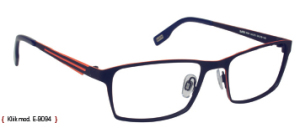 Westgroupe is a case in point. Creative Director and Vice President of Product Development Beverly Suliteanu says that while their Kliik and Bertelli collections have been 85 per cent oriented to women, they are now working towards placing more emphasis on the men’s segment. “For Westgroupe, the men’s category is our fastest-growing segment. We have greatly expanded our Evatik men’s-only collection with a focus on more colour and intricate detailing. Our best-selling models tend to be those that have a bold accent colour or design feature like an orange temple stripe or a green or blue inlay.”
Westgroupe is a case in point. Creative Director and Vice President of Product Development Beverly Suliteanu says that while their Kliik and Bertelli collections have been 85 per cent oriented to women, they are now working towards placing more emphasis on the men’s segment. “For Westgroupe, the men’s category is our fastest-growing segment. We have greatly expanded our Evatik men’s-only collection with a focus on more colour and intricate detailing. Our best-selling models tend to be those that have a bold accent colour or design feature like an orange temple stripe or a green or blue inlay.”
Is a focus on men part of a trend toward distinct products for the sexes and away from unisex? Suliteanu says, “While unisex models are still available, most current eyewear styles are designed for either men or women. The unisex styles tend to be much more basic, both in shape, detail and colour. The need for a distinct men’s offering is what caused us to create Evatik. Rather than designing a few men’s frames within the Fysh collection, we created a collection designed for and marketed to men. We are constantly monitoring men’s fashion trends, in order to quickly capitalize on new colour and design details that resonate with today’s man.”
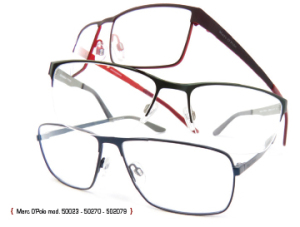 Ronor Brand Manager and Communications Director Jenny Tzelardonis, says, “Men are wearing a lot more nicely tailored clothes made specifically to fit a man’s body. Anything that is designed with a purpose will inevitably fit and feel better. The added comfort is something men seek, and that includes eyewear! Smart companies have understood this and are dedicating designs exclusively to male wearers.”
Ronor Brand Manager and Communications Director Jenny Tzelardonis, says, “Men are wearing a lot more nicely tailored clothes made specifically to fit a man’s body. Anything that is designed with a purpose will inevitably fit and feel better. The added comfort is something men seek, and that includes eyewear! Smart companies have understood this and are dedicating designs exclusively to male wearers.”
Ronor’s Marc O’Polo collection was created exclusively for men by the design team at Eschenbach’s headquarters in Nuremberg, Germany. “Marc O’Polo is exclusively masculine with a customized fit for the male wearer. This means the ultimate in comfort,” says Tzelardonis. “The designs are pure, reduced to the essentials, with a great emphasis on fine materials and finishes.”
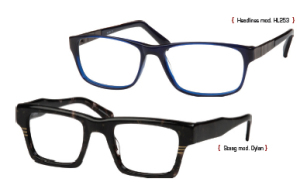 Paul Storace, president of Plan “B” Eyewear, knows what makes men tick: “All it takes is one pretty girl to tell a guy she likes his glasses and he will never be without them. Men are like that.”
Paul Storace, president of Plan “B” Eyewear, knows what makes men tick: “All it takes is one pretty girl to tell a guy she likes his glasses and he will never be without them. Men are like that.”
Plan “B” is moving more seriously into the men’s market with Staag Spectacles, a luxury brand made from block and beta titanium and Mazzucchelli® cured acetates to ensure outstanding quality. Storace assures us that they are not trendy, “but super-classic with an ’over built’ philosophy that includes the best-quality hinges and superior paint. They appeal to men who know what’s what.” This bold, unique and masculine collection features colour techniques and finishes that are among the most advanced in the industry.
Headlines is another men’s collection from Plan “B”. The new HL 253 model in an acetate and titanium combination makes a strong statement in a cool, light blue that looks great against all skin tones and with all eye colours.
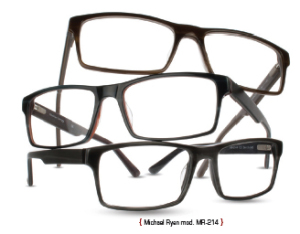 Knowing that men come in all shapes and sizes, CENOCO offers the Michael Ryen collection in an extensive size range. “We designed the original collection in 2008 to satisfy the need for larger-than-average men’s frames that don’t sacrifice style for size,” says spokesperson Tyler Soloway. “Since then we’ve expanded to meet the needs of all men, including pieces that are much smaller. We use high-quality metal and plastics in both modern and vintage styles and we’ve been successful with the contemporary market, as well as with men who prefer a more traditional look.”
Knowing that men come in all shapes and sizes, CENOCO offers the Michael Ryen collection in an extensive size range. “We designed the original collection in 2008 to satisfy the need for larger-than-average men’s frames that don’t sacrifice style for size,” says spokesperson Tyler Soloway. “Since then we’ve expanded to meet the needs of all men, including pieces that are much smaller. We use high-quality metal and plastics in both modern and vintage styles and we’ve been successful with the contemporary market, as well as with men who prefer a more traditional look.”
The Michael Ryen collection reinvents iconic looks and classic shapes and boasts high-end details in materials such as titanium and Mazzucchelli acetates. Every frame boasts spring hinges to ensure a comfortable fit.
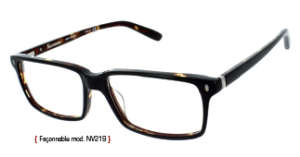 Façonnable has become one of the world’s most celebrated apparel brands and Prisme Optical Group is proud to carry their men’s eyewear collections. “The brand is not about ostentation,” notes Prisme President Richard Stortini, “but rather about instinct, authenticity and elegance.”
Façonnable has become one of the world’s most celebrated apparel brands and Prisme Optical Group is proud to carry their men’s eyewear collections. “The brand is not about ostentation,” notes Prisme President Richard Stortini, “but rather about instinct, authenticity and elegance.”
There are three lines within the Façonnable collection: the vibrant, trendy and affordable Jeans, aimed at those 18-35 who enjoy casual living; New Vintage, which reinterprets the past with authentic detailing; and Progress, with a modern chic and neo-traditional look. Stortini loves Façonnable because it is classic but stylish, and features impeccable quality. “This is a designer label, but less well known than some other designer brands that you find everywhere. It gives eyecare professionals an alternative because we have a more selective distribution.”
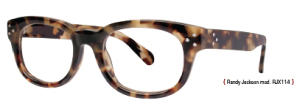 Zyloware Eyewear launched the Randy Jackson frame collection to give every man a stylish and masculine look. On-trend shapes and colours in sun and ophthalmic wear are key features of this collection. The Randy Jackson Limited Edition X114 is a full-rim zyl with a masculine cat’s-eye shape with attractive rivets on the front and temples. Colours include a deep olive and tortoise combination, and black over crystal. Another excellent choice is the Randy Jackson Sun S922P, which features metal nose pad arms and snap-in nose pads to accommodate a variety of patients. (See the Randy Jackson designer story on page XX of this issue.)
Zyloware Eyewear launched the Randy Jackson frame collection to give every man a stylish and masculine look. On-trend shapes and colours in sun and ophthalmic wear are key features of this collection. The Randy Jackson Limited Edition X114 is a full-rim zyl with a masculine cat’s-eye shape with attractive rivets on the front and temples. Colours include a deep olive and tortoise combination, and black over crystal. Another excellent choice is the Randy Jackson Sun S922P, which features metal nose pad arms and snap-in nose pads to accommodate a variety of patients. (See the Randy Jackson designer story on page XX of this issue.)
Everyone recognizes the iconic Stetson hat, a symbol of rugged masculinity, created in 1865 by John B. Stetson. Zyloware brings Stetson’s emphasis on comfort, durability and individuality to life in the Stetson eyewear collection for men. There is a wide array of styles and sizes, including the thin profile Stetson Slim 316. This is a full-rim, contemporary rectangular frame with stylish zyl temples, metal rivets and a stainless steel core wire for maximum comfort. This style easily accommodates progressive lenses.
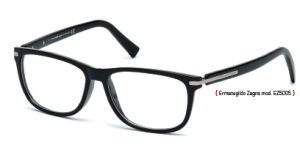 Ermenegildo Zegna, a leader in luxury men’s clothing and accessories, has joined forces with Marcolin to present the first Ermenegildo Zegna Eyewear collection. Launched late last year in Milan, this Made-in-Italy collection is distinguished by craftsmanship and attention to detail.
Ermenegildo Zegna, a leader in luxury men’s clothing and accessories, has joined forces with Marcolin to present the first Ermenegildo Zegna Eyewear collection. Launched late last year in Milan, this Made-in-Italy collection is distinguished by craftsmanship and attention to detail.
Ermenegildo Zegna is aimed at sophisticated men who value distinctive styling and the highest quality. In the optical collection, the rectangular-shaped EZ5005 stands out, with contrasting lines and varying levels of transparency. Sunglass knockouts include the easy-to-wear, geometrically oriented EZ0009, with a variety of temple choices, including tapestry effects, leather inserts or wood detailing. The EZ5005 is an intelligent-looking, rounded frame with transparent, coloured temples on which the brand’s chevron logo can be seen. Materials include titanium, leather and wood, with nuanced colour schemes and exquisite detailing in every piece.
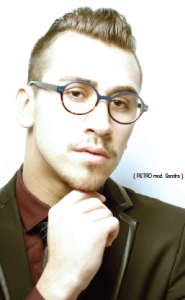 Spectacle Eyeworks created the RETRO collection for men who like to make fashion part of their look. “I don’t think the older generation identifies with a frame as much as the younger or young-at-heart man does,” notes Mehran Baghaie, director and chief designer. “Whereas the ‘hipster’ guy understands that glasses are part of his look and identity, the older generation grew up not wanting to wear glasses at all, let alone making them part of his look!”
Spectacle Eyeworks created the RETRO collection for men who like to make fashion part of their look. “I don’t think the older generation identifies with a frame as much as the younger or young-at-heart man does,” notes Mehran Baghaie, director and chief designer. “Whereas the ‘hipster’ guy understands that glasses are part of his look and identity, the older generation grew up not wanting to wear glasses at all, let alone making them part of his look!”
Baghaie, who was nominated for Silmo d’Or awards in 2002 and 2003, doesn’t hesitate to take design risks, while still creating frames that men love to wear. He recently introduced four new models to RETRO, in designs that keep the geek-chic trend very much alive. The new models – Harvey, Mac, Marcello and Sandra – are cool and confident, while also fitting men at different ends of the size spectrum.
“I wanted to bring a fresh, new perspective on the geek-chic look and design and was inspired to create new, more funky shapes and colours,” says Baghaie. The result is colours that are rich without being intrusive. “Dimension, not distraction,” is RETRO’s philosophy and each evocative new design is available in six colours.
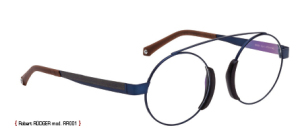 The Robert RÜDGER brand was created in 1989, making it an early leader in the men’s-only market, especially in Germany, Holland and Switzerland. The brand is making a comeback on the international stage, thanks to an agreement with Italian eyewear company Area98.
The Robert RÜDGER brand was created in 1989, making it an early leader in the men’s-only market, especially in Germany, Holland and Switzerland. The brand is making a comeback on the international stage, thanks to an agreement with Italian eyewear company Area98.
The new collection of 15 styles includes a re-imagined key design from the 1990s, the RR001. Attention to detail is imperative, with materials that include titanium, horn and wood. Model RR001, for example, combines titanium and wood for lightness and style, with a vintage front featuring two off-centre circular lenses joined by a single metal bridge, and completed by adjustable temples in beta-titanium with a wood sublimation coating. Understated, elegant and full of personality, Robert RÜDGER is now establishing a presence in North America.
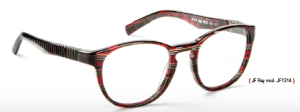 Men are very much part of the aesthetic at JF Rey, always a company for its creative edge. New frames offer wave-inspired styling for men in exclusive Mazzucchelli acetate. Beta-titanium hinges give the temples a natural flex, which easily adapts to the curve of the face. Colours are creative and very masculine. Watch out for the JF 1267, 1268, 1269 and 1270!
Men are very much part of the aesthetic at JF Rey, always a company for its creative edge. New frames offer wave-inspired styling for men in exclusive Mazzucchelli acetate. Beta-titanium hinges give the temples a natural flex, which easily adapts to the curve of the face. Colours are creative and very masculine. Watch out for the JF 1267, 1268, 1269 and 1270!
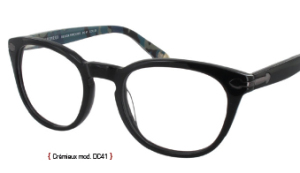 Mood Eyewear acquired Canadian distribution of the Crémieux collection at Mido 2014. “I wanted a masculine collection with a preppy look and when I saw Crémieux I knew I had found what I was looking for,” says President André Bélanger. “I strongly believe this is the look that men will embrace for years to come.”
Mood Eyewear acquired Canadian distribution of the Crémieux collection at Mido 2014. “I wanted a masculine collection with a preppy look and when I saw Crémieux I knew I had found what I was looking for,” says President André Bélanger. “I strongly believe this is the look that men will embrace for years to come.”
Bélanger adds: “The Crémieux design style has a Harvard look but with French refinement and the eyewear collection reflects that: it is bold but classic, with rich, warm acetate that is refined and elegant. The collection will appeal to men with very different aspirations and interests, including the man who has a vintage frame but wants to replace it with something bolder to make a statement or the gentleman who feels more at ease in a more seductive/intellectual style. Men are embracing fashion but it needs to be functional and practical and I think Crémieux knows how to satisfy their needs and aspirations.”
Men’s eyewear is hot, colourful, cool and in demand. Now is the time to upgrade your collections to include the latest design and colour trends for your male clientele. And keep in mind the words of Paul Storace: “All it takes is one pretty girl to tell a guy she likes his glasses and he will never be without them. Men are like that.”
- Read Screws summary of the shows at: http://www.bloomberg.com/news/articles/2015-01-28/men-s-fashion-month-recap-photos-and-style-analysis-from-europe.
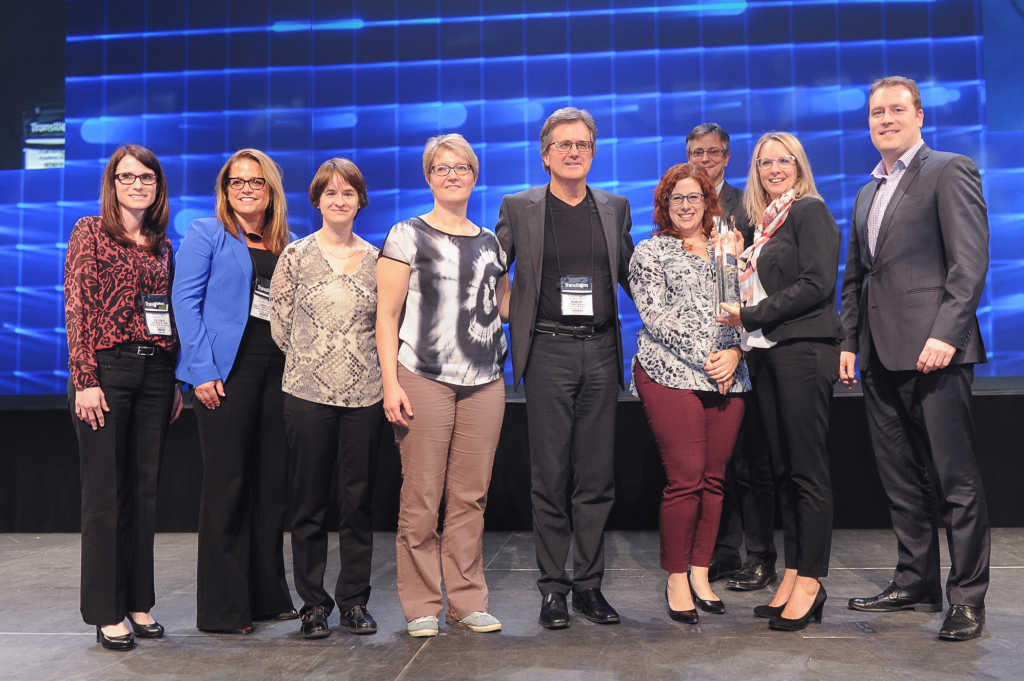 Transitions Optical honoured Opto-Réseau as winner of the Transitions Retailer of the Year award for Canada during the 19th annual Transitions Academy event held in Orlando in late January. This was Opto-Réseau’s first year as a finalist, making its victory especially exciting.
Transitions Optical honoured Opto-Réseau as winner of the Transitions Retailer of the Year award for Canada during the 19th annual Transitions Academy event held in Orlando in late January. This was Opto-Réseau’s first year as a finalist, making its victory especially exciting.
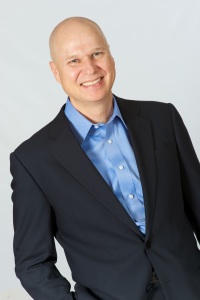
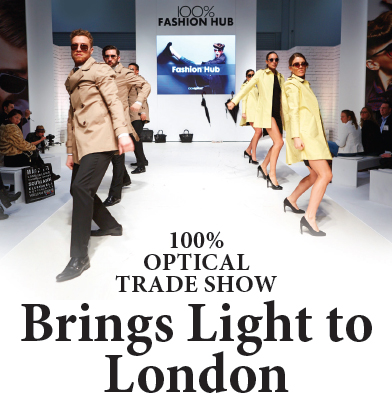

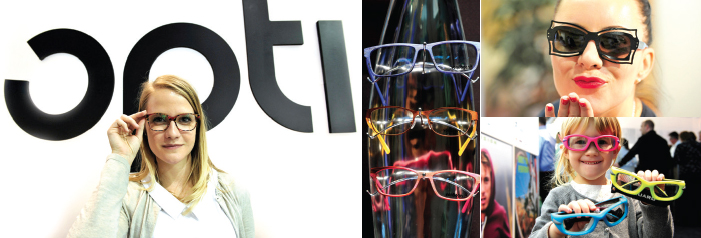

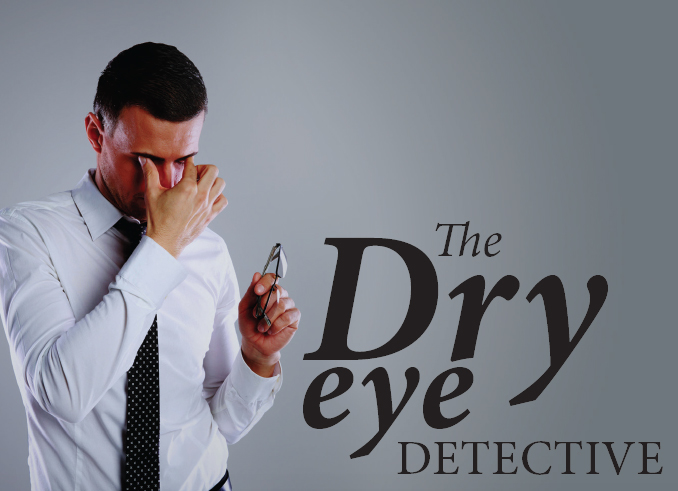
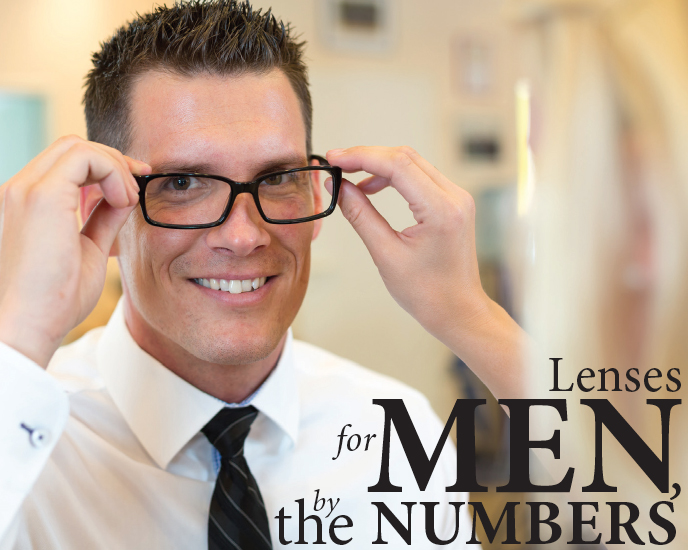
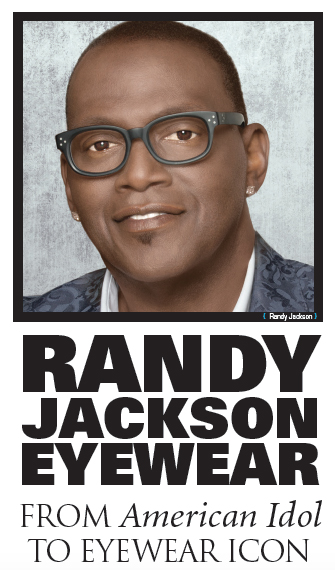

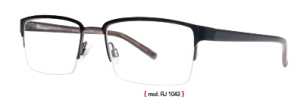
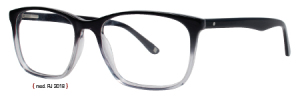

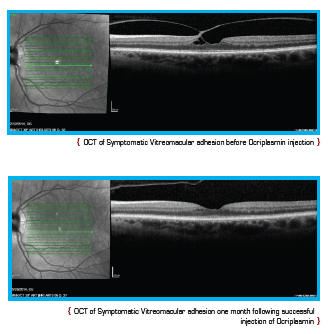 Current treatment options for symptomatic VMA include a period of watchful waiting, surgical removal of the vitreous gel known as vitrectomy, and the intraocular injection of medication. During vitrectomy, an ophthalmologist uses a small, combined cutting/suction tool in order to remove part of the vitreous gel, thus relieving the adhesion between the vitreous and retina. The removed vitreous gel is then replaced with fluid or a temporary gas bubble. Vitrectomy is only performed when patients are at risk of severe visual impairment or loss of central vision.
Current treatment options for symptomatic VMA include a period of watchful waiting, surgical removal of the vitreous gel known as vitrectomy, and the intraocular injection of medication. During vitrectomy, an ophthalmologist uses a small, combined cutting/suction tool in order to remove part of the vitreous gel, thus relieving the adhesion between the vitreous and retina. The removed vitreous gel is then replaced with fluid or a temporary gas bubble. Vitrectomy is only performed when patients are at risk of severe visual impairment or loss of central vision.











